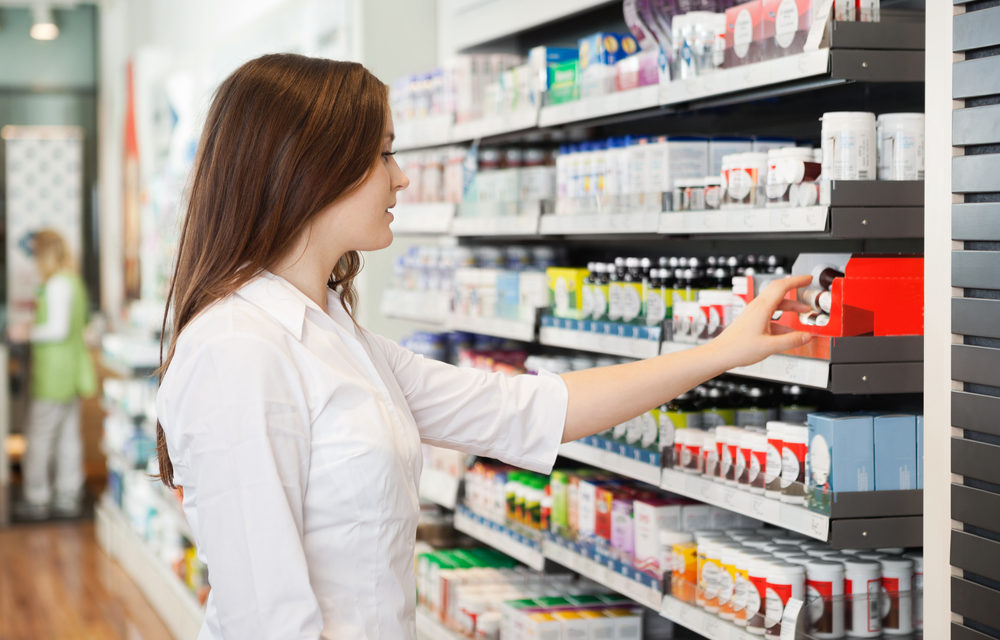Rite Aid posted revenues of $21.5 billion for its fiscal year ended March 3, on Thursday, marking a decline of 6.1%. Retail pharmacy segment revenues totaled $15.8 billion for the year, which was a decrease of 5.6% that the company primarily attributed to the extra week in the prior-year period and a decline in same-store sales. Revenues in the Camp Hill, Pa.-based company’s pharmacy services segment were $5.9 billion, a decrease of 7.8% compared to the prior year, which was due to a decline in commercial business and to the change in the composition of Medicare Part D membership, Rite Aid said.Same-store sales from continuing operations for the year decreased 2.9%, consisting of a 3.9% decrease in pharmacy sales and a 0.8% decrease in front-end sales. Pharmacy sales included an approximate 187 basis point negative impact from new generic introductions.
Same-store prescription fills, adjusted to 30-day equivalents, decreased 1.8% over the prior year due in part to the company’s exclusion from certain pharmacy networks that Rite Aid it had been part of in the previous fiscal year. Prescription sales from continuing operations accounted for 65.9% of total drug store sales, Rite Aid said.
For the fourth quarter of fiscal 2018, Rite Aid reported net income of $767.1 million, or 73 cents per diluted share, compared with a loss of $21 million, or 2 cents a share, in the year-earlier period. However, Rite Aid beat analyst estimates. The company’s loss from continuing operations came to 46 cents a share, or adjusted EPS of 2 cents a share, compared with a FactSet consensus for a loss of 3 cents a share. While revenue fell to $5.7 billion for the quarter, that was ahead of the FactSet consensus of $5.6 billion. Shares fell 1.2% in pre-market trading.
For the full year, the company reported net income of $943.5 million, or 90 cents per diluted share.
Rite Aid has much to look forward to in the coming year, executives said. “We are pleased that we’ve been able to drive improved operational performance through a stabilization of reimbursement rates, improvements in drug purchasing costs and a record number of immunizations which helped us deliver a higher pharmacy margin for the [fourth] quarter,” Kermit Crawford, Rite Aid president and COO, said. “These areas of our business will continue to be key priorities as we begin our new fiscal year and work together to continue building momentum.”
Rite Aid chairman and CEO John Standley noted that the retail pharmacy segment improved its earnings before interest, depreciation and amortization over the prior year. He also noted that its pharmacy services segment, which encompasses its EnvisionRx pharmacy benefits manager was kicking off the commercial selling season strongly on the heels of Rite Aid completing its transfer of 1,932 stores to Walgreens Boots Alliance and ahead of its merger with Albertsons. Standley said the merger would “transform Rite Aid into a truly differentiated leader in food, health and wellness,”
With the store transfers complete, the company said that its transfer of the three distribution centers and related inventory is expected to begin after Sept. 1. Rite Aid said it expects the Albertsons merger to close early in the second half of this year, pending shareholder and regulatory approval and closing conditions. Both companies’ boards of directors have approved the deal and a key regulatory waiting period recently expired.
Rite Aid said it expects sales for the coming year to be between $21.7 billion and $22.1 billion in fiscal 2019, with same-store sales expected to range from flat to an increase of 1% over fiscal 2018, the company reported. That forecast does not include the pending merger with Albertsons, however. Net loss for the year is expected to fall between $40 million and $95 million.

